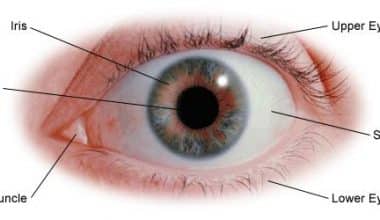A timeline is a line that shows a series of events in the order they happened. This helps people understand how time works. This word can be used to talk about the past and the future, as well as about ideas that are hard to define. Infographic timelines are getting more likely to have both text and pictures. Enough talk! Let’s learn the history of the Google Timeline Maker maps.
Overview
A timeline is a list of events that shows how they happened over time. It’s a chart or graph that shows a long bar with dates and events that happen at the same time running along it. However, any reasonable way to show time will work as long as it fits the topic and material. This plan depends on what happens in the time frame.
Evolution can take place over millions of years, while the September 11 attacks can take place over minutes, and an explosion can happen over milliseconds. Many timelines use a linear time frame, but logarithmic timelines use a logarithmic scale of time. Zoom lens metaphors are sometimes used to show “hurry up and wait” timelines.
Timeline History
The mind can’t separate time and space, and the line in particular, from each other. Time is measured by length, intervals, a before and an after, and the line (in the shape of a circle) is used a lot in clocks. Almanacs, calendars, charts, graphs, and both genealogical and evolutionary trees all use lines as their main visual element to show how time is separated and ordered.
In the past, timelines were mostly shown through writing. This was written down as annals or king lists. It was used with them, just like the Olympiad tables of the Greeks and the consul and triumph lists of the Romans. The annals didn’t tell much about what happened and didn’t make a difference between natural and man-made causes. Starting in the 4th century, the table became the most common way to show the order of events in Europe. According to the Christian view of the world, Christ was born to spread the message of salvation to as many people as possible.
Eusebius helped with this by showing how Jewish, pagan, and Christian histories all led up to the Roman Empire. His books were some of the first to be printed, and they were often copied. This was helpful in the Christian idea of providential time. The table is easy to make, add to, and read with indices. Its focus on common things made it a good fit for the students of the Renaissance, who liked to read a lot.
More Information on Timeline History
Not until the 17th century did historians start to say that geography and time were the two most important parts of history. Renaissance cartographers improved Ptolemy’s maps, which became a status symbol for kings and queens as well as a source of information. Historians were also interested in the idea of putting together a single global timeline using only modern information. In order to keep accurate time, tables like the ones made by Gerardus Mercator had to show past eclipses.
Trying to show time visually has been done in many different ways, from trying to fit all of history into one calendar year to make a series of historical drawings. Even though these changes were made possible by improvements in printing and engraving, which made it possible to use bigger and more complicated book drawings, the table was still the most popular thing in the 17th century, with only minor changes.
Joseph Priestley wrote A Chart of Biography in 1765. It was the first modern work with a timeline. It gave a clear timeline and a way to think about the idea of history moving forward, which was becoming popular in the 18th century. Priestley said that history isn’t always a straight line, though. The table is helpful because it can show a lot of these intersections and splits at once. Priestley didn’t think of it as a picture of the past, but rather as a “mechanical aid to the study of history.”
More Details
But in the 18th and 19th centuries, the timeline became very popular. In the 1800s, positivism became popular, and with the invention of chronophotography and tree ring analysis, it became clear that time moved at different rates. This gave people hope that the events would be shown in a fair way.
Adding more details to a schedule, on the other hand, could sometimes make it impossible to follow. Chronologie Universelle, written by Jacques Barbeu-Duborg in 1753, was printed on a 54-foot-long scroll. In Charles Joseph Minard’s 1869 thematic map of French army deaths in its Russian campaign, the direct line was given much less attention. Charles Renouvier made the Uchronie, a branching map of Europe’s history, in 1876.
It showed both the real path of history and other possible paths. In his book “Time and Free Choice,” published in 1899, Henri Bergson said that the metaphor of a timeline is wrong. In works like Olaf Stapledon’s 1930 book Last and First Man, where timelines are shown on scales from the historical to the cosmological, the question of huge history and deep time led to strange timelines. The Long Now Foundation uses similar methods, and visual artists like Francis Picabia, On Kawara, J. J. Grandville, and Saul Steinberg have shown the problems with showing time in a linear way.
Timeline Types
There are many different kinds of timelines, such as the ones below:
#1. Chronological Timelines
They put the events in order of when they happened. Most stories are about things that happened in the past that can be put in a certain time period. Depending on how precise it needs to be, this can be done every year, every day, or even every second.
#2. Roadmaps
Dates for expected release and shutdown are what they are. Customers can use these to get ready for new features or updates before they come out.
#3. Gantt Charts
Bar charts are a type of timeline that show the different stages of a project in a visual way. They are used in project management. A series of bars, which may overlap and be different lengths, show how long each phase lasts.
Google Timeline
Google Timeline is a location history service made by Google that lets you see where you’ve been, when you were there, and how you got there. Your Google Timeline will also show the photos you’ve taken. Google gets this information from the location services in the app. The new Timeline feature in Maps is great if you don’t mind Google tracking your every move.
Google recently put out a new iOS feature called “Your Timeline” without making a big deal about it. With this update, Google Maps will start keeping track of where you’ve been and where you’re going. The tool lets you see where you were on any given day, which is a nice feature. The bad news is that you might worry that giving Google access to your location data will make it easier for people to find out where you are.
Even though Apple’s new Timeline feature is only for iOS devices, Android smartphones have been able to use it since 2015. When you open Google Maps and go to the main menu, you will see a choice called “Your Timeline.” So, if you look back over the last few days, weeks, or months, you can see all the places you’ve been.
More Information on Google Timeline
The history will show not only where you’ve been, but also how far you drove and how long it took you to get there. At the beginning of each day, there is a summary of how far you walked, biked, drove, etc. that day. Google can also send you a monthly email with a summary of where you’ve been in the last 30 days. Your information is not encrypted, which is a good thing about Google Timeline. You can edit each record to include the exact names and locations of the places you’ve been.
If you want to, you can take things off the Timeline. The user can choose whether to delete all of the entries for a day or just one. It’s important to remember that Google can still find out where you are even if you turn off location tracking for the Timeline feature. Google Maps and search results will still use where you are right now. The only surefire way to keep your location from being shared is to turn off GPS on your mobile device. Unfortunately, many programs use GPS, so this method might not work.
Timeline Maker
A timeline maker diagram is a good way to show how an event or process happened in a certain order. They make it easier to understand things that would be hard to understand otherwise. They are commonly used in teaching, research, and the management of projects and businesses. Using Creately, it’s easy and quick to make a timeline. However, start with a blank page in Creately and pick a timeline that has already been made.
Steps to Becoming a Timeline Maker
The following are the steps you need to take to become a timeline maker:
#1. Today, Make Your First Design
In the search bar on Canva, type “timeline infographics” to find templates that will work. You can start making changes even before you log in.
#2. Think of the Time as It Is
Start from scratch and make a new timeline, or look at examples of timelines to get ideas. You can also choose a template for your infographic based on the type, color, and style that best fits your idea of how it should look.
#3. Find Out About the Specifics
There are a million different ways to tell the time. By choosing graphics from the huge stock library, you can add several points in time to your timeline. Use the available icons, graphics, shapes, photos, and films to put it all together (both free and paid).
#4. Take the Idea and Change It
You can change the format of any timeline with just a few clicks in the easy-to-use design dashboard. Just move things around to make a reference to a certain time, action, or process. Put some text in there and make it look good by using fonts and colors that are easy to read.
#5. You Can Print It Out, Save It, or Send It to Someone Else
Add these to your timeline to finish it. Get it in JPEG, PNG, and PDF formats with high resolution. Get a free copy of your timeline to use in other projects, print and post online, or share with friends and family.
Maps Timeline
Google Maps will show you a timeline of possible places you may have been and routes you may have taken based on your location history. You can also change or delete your location history at any time by going to your timeline. The only person who can view your timeline is you. You can use any device to get to the timeline.
Google Maps Timeline is a great way to see what you’ve done and where you’ve been over time. Just make sure to bring your Android device with you so that a record of your travels can be kept.
It can help you get in shape by keeping track of how many steps you take each day and letting you know if you need to spend more time working out. Google Maps Timeline is helpful because it gives you an idea of how long it will take to get from one place to another. You should also go off the beaten path so that you can change up your workouts every day.
How Do You Use the Timeline on Google Maps?
The following is how to use a timeline on Google Maps:
To use the Timeline feature, your location services must be turned on for the Google Maps app or another Google service. By doing this, Google Maps will be able to keep a more accurate record of your trips, giving you a better idea of how far you traveled.
You can now use the Google Maps app or the desktop version of Google Maps to get to your timeline by tapping the “Your timeline” option. When you turn on location history, your device will start putting together a timeline that shows where you were, how you got there, and an estimate of the mode of transportation you used (walking, biking, or driving). You can focus on a certain time frame to get a more accurate picture of how much of the world you have seen.
What Is an Example of a Timeline?
Timelines can be an overall summary of important events, a detailed agenda or itinerary, or a schedule of activities that lists important dates and events like project milestones, due dates, and ongoing tasks.
How Do I Show My Timeline?
The following are;
- Get out your Android device and open the Google Maps app.
- Choose an image for your profile or begin typing “Your Timeline.”
- In Timeline, you can choose a time and place.
- Just click the button that says “Details.”
- Find the Timeline on the scroll.
What Is the Difference Between Time Line and a Timeline?
When “time line” and “timeline” are used separately, they mean “a table summarizing major events over successive years in a certain historical period” and “a schedule of events and procedures,” respectively.
What Is a Timeline Synonym?
Agenda, timetable, itinerary, record, schedule, calendar, docket, logbook, outline, program, register, and timetable are all examples of these kinds of documents.
How to Draw a Timeline?
The following are;
- Get all the facts you need.
- Create an approximate plan for what’s going to happen.
- Figure out how your timeline will be set up.
- Your timeline will look better with photos and formatting.
Conclusion
Timelines are useful for keeping track of changes because they show how things happened in a straight line and can shed light on both the past and the present to help understand the present. You can also use the tools to help with time management. In project management, a timeline shows the most important dates and events that happen during the project’s lifecycle and how they relate to the project’s goals. Annotations on a timeline make it easy to see how things are changing.
- FREE PROJECT MANAGEMENT TOOLS EXCEL: All You Need to Know
- QUESTIONS TO ASK INTERVIEWER: Creative Questions To Win A Job
- Company Profile: 10 Simple Steps to Write Company Profile
- Construction Project Management: Beginner’s Guide to Efficient Management
- CUSTOMER JOURNEY: Meaning and How to Use the Maps to Create a Unique Customer Experience






